Here is a photo of Sarah Watson, my sister Kathy Lepani's mother-in-law. She is making a kind of currency or gift exchange used in sagali, memorial services for the departed. These bundles are made from scored banana leaves (also used for grass skirts) and are given in recognition of people who were important to the person who died. (Kathy, please chime in here to explain this more fully, if you wish.) I am sure there will be a lot of work to be done assembling these for Sarah's sagali, as she made so many for others during her lifetime. I like the fact that she has a little make-up bag in this photo...I wonder what she used it for? Look at the beautiful large woven basket, too. Sarah was a woman of regal bearing, wearing bare feet.
My parents wrote the words below. They once had the chance to visit Sarah's village in the Trobriand Islands. The bottom photo is of Sarah on the steps of her house, near her final resting place.
We have such vivid memories of Sarah--such a remarkable person--dignified, humorous, nurturing, generous, the center of her community. We remember the hospitality she showed us when we visited her in Losuia, how she spread a tablecloth on the floor mat in her house, brought out her china and served us incredibly delicious meals of fish (or chicken), greens and yams. We remember her leadership and competence during a sagali we were privileged to witness. We remember her in the dark evenings sitting in her house, child in her lap, telling stories in Kiriwina, the circle of people around her listening and laughing. On our trip by boat to Vakuta, we encountered a daunting storm; Sarah held Genou, sea-sick, in her arms in the hold of the boat. Holding a child is a recurring image of Sarah--it was repeated when Joyce visited her in Alitou with Kathy.
Burying Sarah in front of her house seems most fitting. That was the center of her influence, the influence that rippled out into the world way beyond Losuia.
And my mother, Joyce Kennedy, also wrote a poem, about those ripples of influence.
January 21, 2010
Imagine a village woman who dies on this day.
In the morning she awakens as usual,
moves her old bones around her home
made partly of palm leaf; by evening she is gone.
Put yourself into her past.
Become a child on her tropical island.
Place yourself in this woman’s arms.
The night is black, thick with stars.
Friends and relatives sit around her
in the small space in which she lives.
She is telling stories. You listen half-asleep.
You become part of the story,
moving along in the soft rhythm of her words.
You know that you are safe within these words.
How could you know that sometime in your future,
you will understand that she is the point
in a circle that travels out in ripples,
and that after her death
the ripples will continue to push outward
to reach other places in this world?


























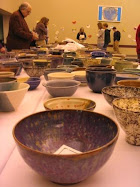









































































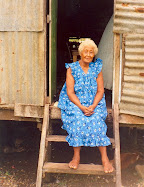





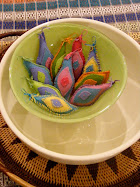






























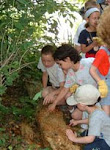.jpg)














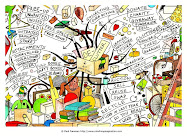












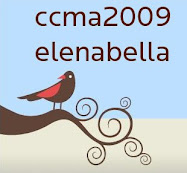




























































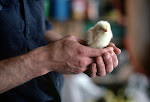

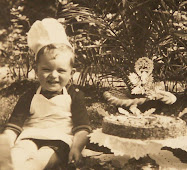














































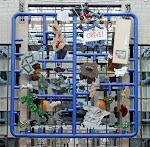.jpg)








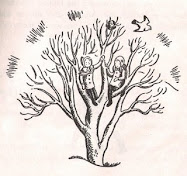







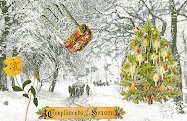



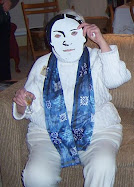





















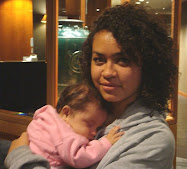
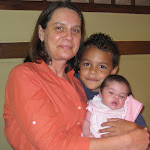





























































1 comment:
Thank you so much, Ellen, for honoring Sarah's life and influence in these three wonderful postings. And the work and aesthetics of doba weave perfectly into the daily poetics of elenabella! Just to chime in here: Doba is the name of the bundles of dried banana leaves that Trobriand women manufacture by the thousands for sagali, or mortuary exchange feasts. The word also refers to the banana and pandanus fibre skirts worn by girls and women (and male dancers), which also feature in sagali distributions. Cotton fabric, called karekwa after the English ‘calico,’ has been incorporated into sagali over the last several decades and is now regarded as an essential exchange item. Bolts of fabric are cut into two-metre lengths to augment the banana leaf bundles. Women also sew special cotton skirts to wear during sagali and to use for distribution. The cloth pieces distributed at sagali are later transformed into items of clothing, sheets, pillow cases, table cloths, and curtains. For the sagali of her maternal uncle in 2000, Sarah worked for weeks to prepare her doba. Her inventory included hundreds of banana leaf bundles stacked in a huge basket measuring three metres in circumference and one metre in height, 6 bolts of material that were cut into two-metre lengths, and 8 fibre skirts. On her old manual Singer sewing machine, Sarah made 40 cotton skirts, 22 cotton dresses, and 20 pillow cases to distribute at the sagali. The work of sagali is perpetual and passionate.
Post a Comment